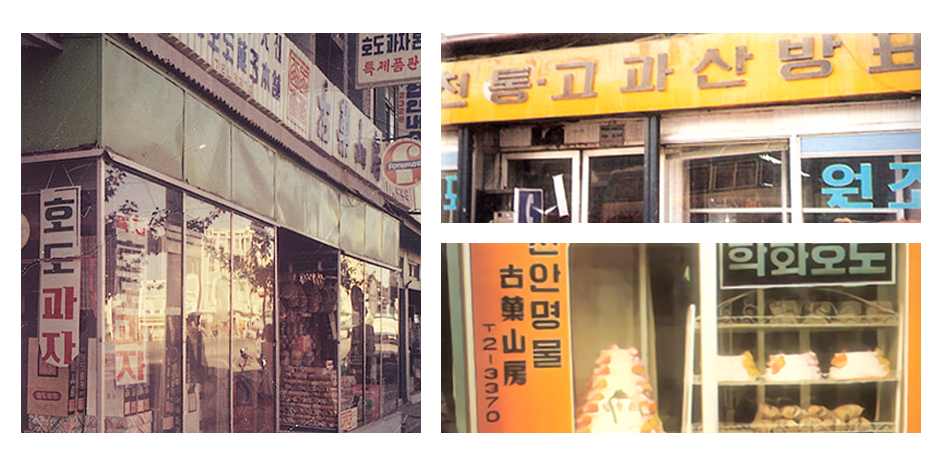
Hodugwaja is created in 1934
Hodugwaja (호두과자) is a popular Korean traditional pastry that originated in the city of Cheonan. It is known for its unique shape, delicious filling, and popularity as a street food and snack. The name “hodugwaja” translates to “walnut cake” in English, but the pastry itself doesn’t always contain walnuts. Instead, it’s named after its walnut-like appearance.
Here’s more about Hodugwaja:
Shape and Appearance: Hodugwaja is characterized by its distinctive walnut-shaped design. It consists of two halves that are joined together, forming a small, round, walnut-like shape. The pastry’s outer layer is made from a dough that’s pressed into a walnut mold. The halves are filled with a sweet and flavorful filling, which is a key element of the pastry.
Filling Varieties: While traditional hodugwaja fillings were often made from red bean paste, modern variations offer a range of fillings to cater to different tastes. Some common fillings include:
- Red Bean Paste (Patang, 팥앙): A classic filling that is slightly sweet and has a smooth texture.
- Walnut and Honey (Hodu Matang, 호두마탕): A popular filling made from crushed walnuts and honey, offering a nutty and slightly sticky texture.
- Cream Cheese and Sweet Potato (Cream Cheese Goguma, 크림치즈 고구마): A modern twist that combines cream cheese and sweet potato for a creamy and mildly sweet filling.
- Chocolate (Chokollit, 초콜릿): Some hodugwaja are filled with chocolate for a richer and indulgent flavor.
- Custard (Keoseuteo, 커스테오): Custard-filled hodugwaja offer a smooth and creamy texture with a hint of sweetness.
Preparation and Cooking: The dough for hodugwaja is made from a mixture of flour, water, sugar, and other ingredients. The dough is placed into the walnut-shaped mold, then a spoonful of filling is added to one half. The two halves are pressed together and the pastry is cooked over a hot griddle or in a special hodugwaja machine until the dough is golden brown and crispy.
Availability: Hodugwaja is a popular snack that can be found in various street food stalls, markets, and specialty shops throughout South Korea. It’s particularly associated with Cheonan, where it originated, but it’s enjoyed across the country.
Hodugwaja offers a delightful combination of textures and flavors, making it a beloved treat among locals and tourists alike. Its versatility in terms of fillings ensures that there’s a hodugwaja to suit every palate.
Origin city of Cheonan
Hodugwaja’s fame in Cheonan can be attributed to its history, cultural significance, and the city’s role as a hub for producing and popularizing this traditional Korean pastry. Here are some of the reasons why Hodugwaja is famous in Cheonan:
Historical Roots: Hodugwaja has a long history in Cheonan, dating back several decades. The snack’s origins are closely tied to the city’s culinary heritage and local traditions.
Local Specialization: Cheonan has become known as a center for producing high-quality Hodugwaja. Local bakeries and shops in Cheonan have perfected the art of making this traditional treat, ensuring its authenticity and popularity.
Tourism and Culture: As Hodugwaja gained recognition as a unique and delicious Korean snack, it attracted tourists and food enthusiasts to Cheonan. The city has capitalized on this popularity by promoting Hodugwaja as a local specialty and cultural attraction.
Local Economy: The production and sale of it have contributed to the local economy of Cheonan. Many businesses in the city are dedicated to making and selling this treat, providing employment opportunities and supporting the local economy.
Traditional Identity: it has become part of Cheonan’s cultural identity and heritage. The city takes pride in its role as a guardian of this traditional snack, preserving its history and passing down its preparation techniques.
Cultural Events: Cheonan hosts various events and festivals that celebrate it and its cultural significance. These events attract visitors from across the country who want to experience the snack in its place of origin.
Community Involvement: The making of it often involves the participation of local communities and businesses. This sense of community engagement and cooperation has contributed to the snack’s prominence in Cheonan.
In summary, Hodugwaja’s fame in Cheonan is a combination of historical roots, local specialization, cultural significance, tourism, and community involvement. The city’s dedication to preserving and promoting this traditional snack has led to its enduring popularity both within Cheonan and beyond.
History of Creator

In 1934, Cho Gwi-geum and Shim Bok-soon, who had good confectionery skills, developed a snack that can be enjoyed with tea using walnuts, a local specialty of Cheonan.
The flour was kneaded and baked using a walnut-shaped frame, but it was an invention that took into account the taste, nutrition and design of the local specialty walnuts.
Since then, Cheonan Station has become a nationwide famous ‘Cheonan Walnut Sweets’ as word of mouth spreads to people moving around the country.
How to make a Hodugwaja at home?
Making at home can be a fun and rewarding culinary project. Here’s a basic recipe for making it with a red bean filling:
Ingredients:
For the Dough:
- 1 cup all-purpose flour
- 1/4 cup glutinous rice flour
- 1/4 cup granulated sugar
- 1/4 teaspoon salt
- 1/2 cup water
- 1/4 teaspoon vanilla extract (optional)
For the Filling:
- 1 cup sweetened red bean paste (store-bought or homemade)
Instructions:
- Prepare the Filling:
- If you’re using store-bought red bean paste, it’s ready to use. If making homemade red bean paste, cook and sweeten the adzuki beans, then mash or blend them into a smooth paste.
- Prepare the Dough:
- In a mixing bowl, combine the all-purpose flour, glutinous rice flour, sugar, and salt.
- Gradually add water and vanilla extract (if using) while stirring. Mix until you have a smooth and slightly sticky dough.
- Shape the Dough:
- Divide the dough into small portions, roughly the size of a golf ball.
- Flatten each portion of dough into a circle using your hands or a rolling pin. It should be about 3 inches in diameter.
- Assemble them:
- Place a small spoonful of red bean paste (about 1 teaspoon) in the center of one dough circle.
- Place another dough circle on top, covering the filling.
- Gently press the edges of the two dough circles together to seal it, creating a walnut-like shape.
- Cook the Hodugwaja:
- Heat a non-stick skillet or griddle over medium-low heat.
- Place it on the skillet and cook for a few minutes on each side until the dough turns golden brown and crispy.
- Serve and Enjoy:
- Once cooked, remove it from the skillet and let them cool slightly.
- it are traditionally served warm, but you can also enjoy them at room temperature.
- Optional Variations:
- Experiment with different fillings, such as walnut and honey, chocolate, cream cheese and sweet potato, or other sweet fillings of your choice.
Please note that making it requires some practice, especially in shaping and sealing the dough. The first few might not turn out perfect, but don’t be discouraged—practice makes perfect! Additionally, you can adjust the sweetness of the dough and filling according to your preference.
Remember to ensure that the red bean paste is fully cooled before using it as a filling, as hot fillings can make the dough soft and difficult to handle. Enjoy your homemade it as a delightful treat!
Special pan for Hodugwaja.
Yes, there is a special pan used for making it, which is called a “Hodugwaja pan” or “Hodugwaja mold.” This pan is designed to create the distinctive walnut-shaped appearance of Hodugwaja and to ensure even cooking. The pan typically consists of two halves that come together to form the complete walnut shape.
The Hodugwaja pan is equipped with multiple molds that allow you to cook multiple it at once. Each mold consists of two halves—one for the bottom and one for the top of the walnut shape. The pan is placed on a stovetop or a heating element, and the molds are filled with it dough and filling.
Using it’s pan helps achieve the traditional look and texture of Hodugwaja, as it allows for consistent cooking and shaping. If you’re planning to make Hodugwaja frequently or want to achieve the authentic appearance, investing in a Hodugwaja pan can be a good idea. These pans can be found in stores that specialize in Korean or Asian kitchenware, and they come in various sizes and designs.
However, if you don’t have access to a Hodugwaja pan, you can still make it using basic kitchen tools. Simply shape the dough and filling into the walnut-like shape by hand and cook them on a non-stick skillet or griddle. While this method might not achieve the exact appearance of Hodugwaja made with a specialized pan, it can still result in delicious and enjoyable treats.
If you’re aiming for authenticity, a Hodugwaja pan would be a valuable addition to your kitchen. If not, you can still create it using readily available kitchen tools.







